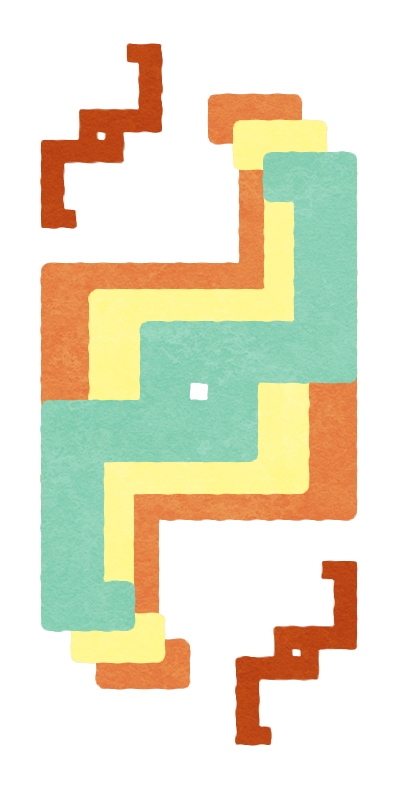The heat of the desert was amplified by the vast field of colorful dye-vats and the fires beneath. Various dyes, having spilled over the years the dye-works had operated, stained the ground in an array of wonderful colors.The Poltoul dye-works serves as the largest dyeing operation within the known world, and the source of much of Poltoul's trade.
Structure
Terraced rows of earthen vats, built together in raised blocks of six, run along the ground. On each side of these raised vats are precipitous stairways, allowing access for dyers to place and remove textiles. Underneath each block lies a single doorway, leading to a fire pit with which to heat the vats above as needed. A small round chimney is built into the center of each block, allowing for smoke to escape without tainting the vats too much.
A five-foot tall adobe wall runs along the perimeter of the dye-works. Various colorful splatters along this wall have been built up over the years by bored and clumsy workers alike.
From the ashes
The dye-works have been constructed and rebuilt a number of times since its inception— not to mention, it has expanded greatly from the small operation it started out as. Long ago, a Ponouli attack had seen the original dye-works razed to the ground where they originally stood— on the opposite side of the city.It was decided afterwards that, as it brought most of the city-state's wealth— the dye-works must be more well protected. It was rebuilt near the cliffs, so as to block extra avenues of attack. Walls were constructed around the perimeter— which have long since seen sections torn down and expanded— and a more careful watch by the military was kept.
Feathers and Stone
Once it is time to dye, the dry crushed feathers are poured into vats and mixed with double their amount in water. The fires underneath are then lit, and left to heat to a boil.
After they have heated up— but before they boil— salt is added. This gives the dye stronger fastness, or more plainly— allows it to stick to textile with a stronger bond, resisting washing out.
After they have heated up— but before they boil— salt is added. This gives the dye stronger fastness, or more plainly— allows it to stick to textile with a stronger bond, resisting washing out.
Once the vats begin to boil, the textiles are collected, and the dye it brought to a simmer as the textiles are placed in the pot. The vats will be left simmering as long as is needed for the color to properly dye the textiles— stirred periodically.
How long, exactly, this takes depends greatly on the dye and the textile being dyed. Some take mere hours, other can take weeks— more complex mixtures can take months.
How long, exactly, this takes depends greatly on the dye and the textile being dyed. Some take mere hours, other can take weeks— more complex mixtures can take months.
Commonly produced dyes
| Dye | Dyestuff(s) |
|---|---|
| Contuil Yellow | Simply mixed from the natural feathers of the bird. |
| Contuil Orange | Simply mixed from the natural feathers of the bird. |
| Contuil Blue | Simply mixed from the natural feathers of the bird. |
| Rektouzk Green | The yellow and blue feathers of the Contuil are mixed with the green leaves of the Tnoul plant. |
| Cipou Red | The red, iron-rich dirt of the canyon itself. |
| Cipou Pink | The pink, iron-rich dirt of the canyon itself. |
| Turquoise | A more complicated process, involving multiple washes of contuil blue, and Rektouzk green. |
| Wooden Brown | Produced from the bark of the Yeuch tree, oddly only seems to work within copper vats. |
Type
Manufactory
Owning Organization
The color of a king
A long-forgotten Tichan requested that a new, unique color be used for his royal garb.He commissioned the famed dye-works for the completion of this task, and in a few years time— turquoise emerged.
While the Tichan has been lost into the annals of history, this dye has remained a popular choice.




Comments
Author's Notes
Feedback is very much welcome! Whether on the content, or the formatting! Please, point out typos if you spot any!